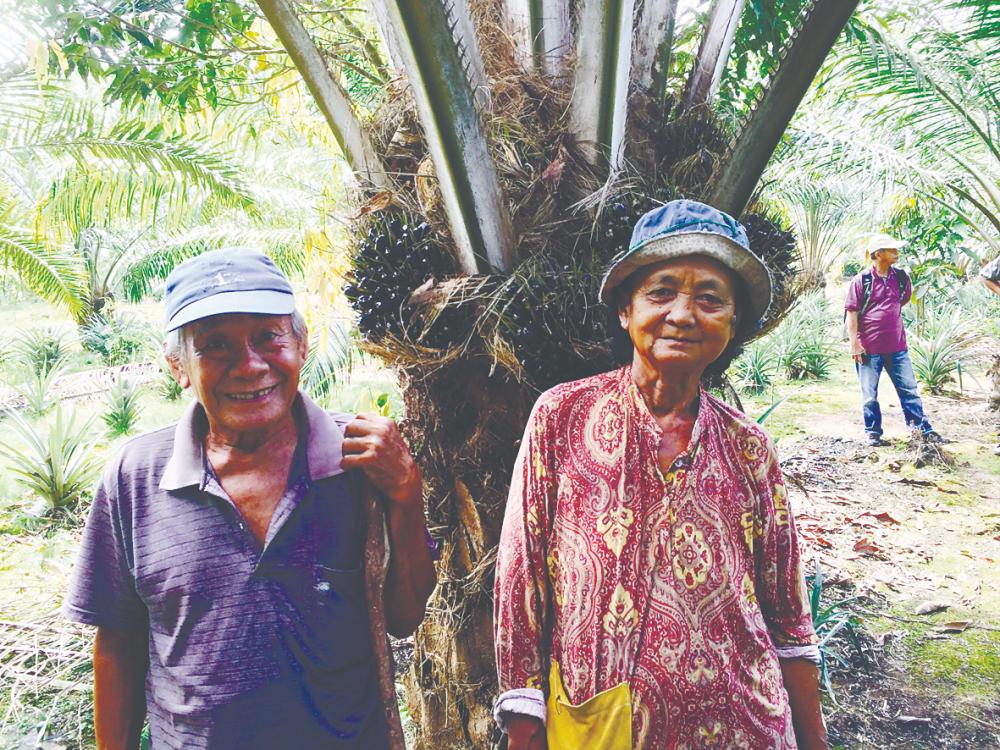RECENTLY, I was delighted to see a Bloomberg report on palm oil prices, now getting a premium to soya oil.
For many years palm oil could only sell at a discount. I could work out how much the plantations and the nation were losing from year to year.
Each morning, the prices have been quoted lower than the other oils and sold in a tight band.
Competitors to palm oil would get higher prices and enjoy the margins. However, they began to see how palm oil was beginning to eat into their market share as production began to increase in the 1970s.
In 1968, I remember hosting a group of farmers from Germany coming to see the oil palm plantation I was working in at Kluang, led by a bright, articulate and attractive girl called Maria Harmer. They enjoyed the visit. I gave them a good lunch at the bungalow, and we parted as friends. Since then, the volume of palm oil has increased with more plantings from rubber to oil palm.
Over time, the campaigns started to say that tropical oils were bad. Other oils were more healthful. Such claims of course stayed in the minds of housewives.
Later in my career, when I was in charge of cooking oil refineries for Sime Darby, I had stood in the supermarkets, waiting to see how the palm oil under our brand was selling. Most housewives would reach for other oils, such as soya or rapeseed, even though sold at higher prices.
Even my wife Maznah believed that too, until we started our young married life in Kluang and she lived on the plantation. She saw how palm oil was produced and did not use other oils.
Since then, scientists have done more work and proved that palm oil is stable – it has carotene, Vitamin E, antioxidants and has no cholesterol. For those values alone, the price of palm oil should have been higher.
The food manufacturers also realise this, together with other reasons, such as palm oil can bring out the flavour. Being stable, the quality of their products remains the same for longer.
The war against palm oil went up. In 1986, it came to a stage when Tun Dr Lim Keng Yaik, the minister responsible for plantations, went to the United States together with Tan Sri Augustine Ong, the head of research, and Tan Sri Borge Bek-Nielsen, the head of United Plantations – two people with the best credentials – to give a correct picture on the attributes of palm oil.
Since then, in his inimitable way, Tun Lim addressed international conferences on why palm oil had succeeded in getting more market share, not only in cooking but also in other products such as cosmetics. (“Use palm oil-based products, not from other oils. Actress Michelle Yeoh uses palm oil products, and she is beautiful. She is my niece.”)
We in the hall, including the “soya bean people”, knew what was coming next. He would go on to point out that palm oil does not need hydrogenation, unlike other oils in certain products. These oils, he said, contain trans-fatty acid, and it raises bad cholesterol. (“As a medical doctor, I am qualified to tell you, they are not good for the heart. But I don’t want to talk about it now, which I will do if they keep on fighting me). As usual, what he said livened up the hall and he got attention.
Apart from Tun Lim, many people and writers had extolled the value of palm oil, but it was still a tough fight in the market.
Over the years, Indonesia has come in to help in a big way. It has become the biggest producer of palm oil, with double the production of Malaysia. The two countries are working closely to counter current smear campaigns.
In addition, Indonesia has gone ahead to increase the use of biodiesel and aviation fuel so they take some volume off the traditional market.
Both countries are aware of the demand for sustainability and are complying with them but are wary about trade barriers that may come in the guise of ecological requirements.
But the competitors would still go on with their campaigns. They even persuaded some manufacturers to put on their labels “No Palm Oil Inside”.
Lawmakers and writers continue to write against palm oil but few have come to see the plantations, mills and refineries.
Positive things are being done on conservation and feeding the world with good products. At the same time, the owners of land that have been more or less idle have done much better with the oil palm that they have planted.
I smile each time I see smallholders, such as during my visits to Sarawak. I saw mostly jungle in 1961 when I first visited. The smallholders were poor but now I see many new cars parked outside the longhouses, and they use their Hilux pickup trucks to bring the palm fruit to the mill.
I love to see them work to get the bunches down. Sometimes during the Gawai holidays, the sons also came to help. A few told me they had come back to have a great time with their parents but most of the year they are at the oil rigs and working abroad after they had left university.
For all I knew, they had seen the world more than I had. But I also knew what tree they should thank to get them to universities and see their parents enjoying life in comfort with all the things you and I have at home.
On Maria Harmer, I do not know where she is now. She may have become a legislator and fighting against palm oil. I would never know. But at least, unlike many lawmakers, she came to see the plantation, and know what she was talking about.
The writer has extensive experience in the management of oil palm plantations. Comments: letters@thesundaily.com









